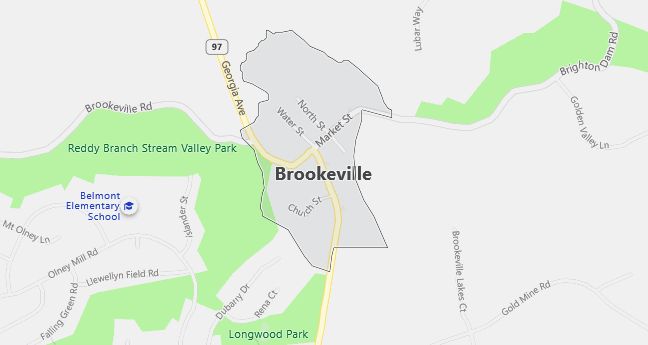Moving to Brookeville, Maryland
Tradition sets the founding of Brookeville in 1794. That is when Richard Thomas laid out a small town adjacent to his existing grist mill, 18 miles north of the place that six years later was to become Washington City, the District of Columbia. Richard’s wife, Deborah, had inherited the land from her father, Roger Brooke IV, who had inherited it from his father, James Brooke, an influential Quaker settler—whence the town derived its name.
Three fast flowing streams and two springs made the location ideal for a milling town. It soon became a bustling commercial and educational center serving the surrounding agricultural areas. Another local landowner, Allen Bowie Davis, was instrumental in the construction of the Brookeville-Westminster Pike, a major toll road whose route is followed today by Georgia Avenue through Brookeville.
Brookeville continued to thrive until proliferation of the automobile in the early 20th century led to its demise as a commercial center. Today, it is a valuable collection of period structures standing just as they did when they comprised a rural village during the 19th century. The 60-acre historic district includes 45 residences, a former post office, a plumbing business, a church, and a late-19th-century two-room public school now owned by the town and awaiting major restoration work. In 1979, the town was placed on the National Register of Historic Places, and in 1986 it adopted Montgomery County’s Historic Preservation Ordinance, thus becoming a County Master Plan Historic District.

